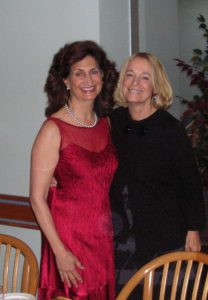I went on high school dates with James Bond.
Well, not exactly. The first movies made from Ian Fleming’s Cold War-inspired spy novels came out when I was in high school, and I  suppose the date who paid my admission and bought the popcorn thought I was only with him.
suppose the date who paid my admission and bought the popcorn thought I was only with him.
Looking back now I can see how important movies like “From Russia with Love” and “Goldfinger” were in adding wanderlust to the general–well, what can I say?–lustiness of my teenage years.
Even when James Bond movies went from the right kind of silly to just plain silly, I saw every one over the decades, first with boyfriends and then with my own children. Even when they were wincingly awful, at the very least I was exposed to some fabulous places I wanted to visit some day. Many years later I planned a side trip in Italy to include a stop at the Italian ski resort at Cortina d’Ampezzo just because I loved the way the town looked nestled in under the peaks of the Dolomites in “For Your Eyes Only.”
Except it didn’t look like that. The street scenes didn’t match the actual streets, and the big action sequence obviously had been shot on a set and later merged with a backdrop filmed on location. I was really disappointed, though I suppose I shouldn’t have been. Presumably it would be hard to find a florist willing to have a motorcycle crash through the window of his or her shop, even to help James Bond make a point about how he can fend off the bad guys without breaking a sweat.
I thought about this yesterday as I took stock of the area of Portugal just west of Lisbon, the first stop in my research trip for novel number four. Though I do the most thorough research I can on the settings of every scene, sometimes the imagination is, well, a bit too imaginary.
Sometimes every last little bit of accuracy doesn’t matter all that much. Though the typical reader might not know or care whether the ocean is visible from a particular hilltop, or what kind of trees or wildflowers grow in a specific valley, I care about all that down to the last detail, even though I know that in the end, I may choose plausibility over the exact facts I uncover.
But not always. The first days of my research trip to Portugal and Spain have been an odd combination of “uh oh,” “ah hah,” and “oh well,” an amalgam of things I have to rewrite because they are simply wrong, things that can be made much clearer and vivid in detail, and things that are not exactly the way I pictured but don’t really need to be changed.
An example of the first is how Aya, the heroine of the novel, arrives at the palace of Sintra. Plain and simple, I had the look and layout of the entrance to the palace wrong. Easily fixed. An example of the second is my realization that this part of Portugal resembles the Pacific Northwest more than the Mediterranean climate I imagined. That matters a lot. Aya lives in a thick forest, and she would move around far differently than I thought. Many scenes will have to be adjusted, but I will be able to make the book far more vivid as a result of having visited the places where the novel is set.
Probably the most common reaction I have had is a shrug of the shoulders. The Sintra palace garden isn’t exactly the way I pictured it, but I need certain details to be the way I have them, and because the inaccuracy is irrelevant, I’m sticking with my version.
Historical novelists, at least the ones I know, approach their work with integrity. Our job is to fill out observable and recorded fact with what could have been. We don’t make it all up. We embellish with our imaginations, change what we must when we uncover important new information, and leave alone what works when there is no relevant issue at stake. The facts make our books “smart reads,” but the characters and story make them “good reads.” I’m going for the best of both!






